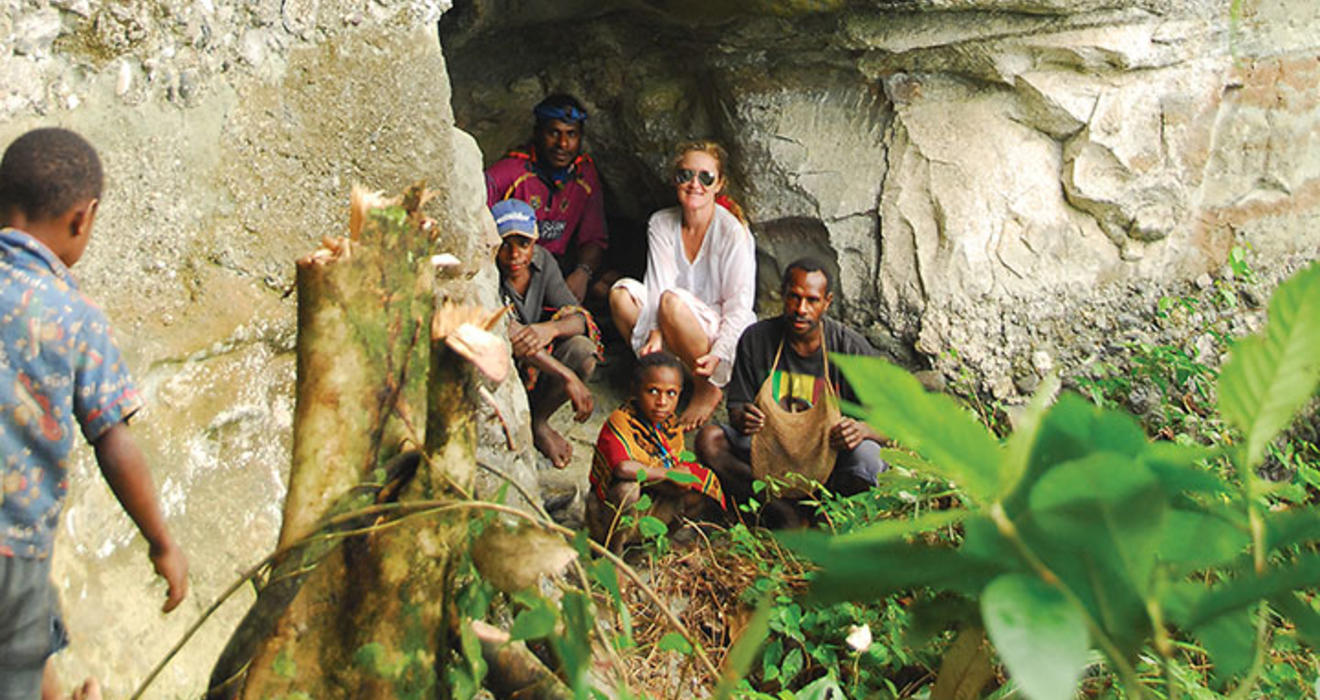
Sept. 16, 1957 – July 16, 2015
Anthropologist Nancy Sullivan ’80 went to Papua New Guinea to do research for her doctorate, fell in love with the country, and ended up living there for 24 years. She used those years to become an advocate for the country’s indigenous people and their culture as well as a beloved mother figure to more than a dozen children from the jungle.
“Nancy had a compassionate concern for children and an aversion to the destruction of a beautiful environment and the inequality associated with large-scale developments such as mining and foreign-owned factories,” says anthropologist Laura Zimmer-Tamakoshi, who hosted Sullivan on her first trip to Papua New Guinea and became her friend.
Her concern was not merely about policy; it was personal. Families living in the jungle sent their children to live with Sullivan in town, where they would go to school. “I believe nine children lived with her and there were others who didn’t, but she paid for all of them to go to school,” says her brother Jeffrey. “It was a better life than living in the jungle.”
Living in Papua New Guinea for 24 years, she become an advocate for the country’s indigenous people and their culture.
Sullivan formally adopted the first child who went to live with her. The boy, Christian Dominic, was given to Sullivan by his tribe when he was 14. Blind in one eye after being shot by an arrow, he traveled with Sullivan to the United States, where she arranged for an operation that restored his eyesight. Now 37, he was working as Sullivan’s assistant in her anthropological-consulting business when she was killed July 16 in a car accident in New York state.
As warmhearted as Sullivan could be toward the tribal people — bringing them bolts of cloth and solar panels — she had little patience for those she believed threatened the local culture. Journalist Keith Jackson, based in Papua New Guinea, wrote on his blog that Nancy Sullivan was known for her “feisty and fearless approach” to the issues afflicting local residents, “often to the ire of the government and companies that she saw as not behaving in the people’s interests.”
She helped found NO PMIZ (Pacific Marine Industrial Zone), an organization fighting China’s planned construction of a tuna-fishing and canning project near the town of Madang, because it could cause pollution and kill other fish. And through the efforts of Sullivan and her associates, more than 300 caves in the Karawari region containing stencils and images that may date back 20,000 years are under application to become a UNESCO World Heritage Site. “Conservation of the cave-art system was close to Nancy’s heart,” says Zimmer-Tamakoshi.
The daughter of a Wall Street executive, Sullivan studied art at Princeton, lived off campus, and marched against apartheid. After working as a film and television storyboard artist in New York for a few years, she began studying for a Ph.D. in anthropology at NYU. Then, at the urging of her mentors, she used a Fulbright to research film and television in Papua New Guinea. “If you really want to make a name for yourself as an anthropologist, it’s one of the few places left where you can make first contact with people,” her brother says.
Her colleague John Douglas says that she was “in many ways larger than life.” Paraphrasing the words of poet Andrew Marvell, he adds, “She nothing common did on that memorable scene.”
Fran Hulette is PAW’s Class Notes editor.






No responses yet